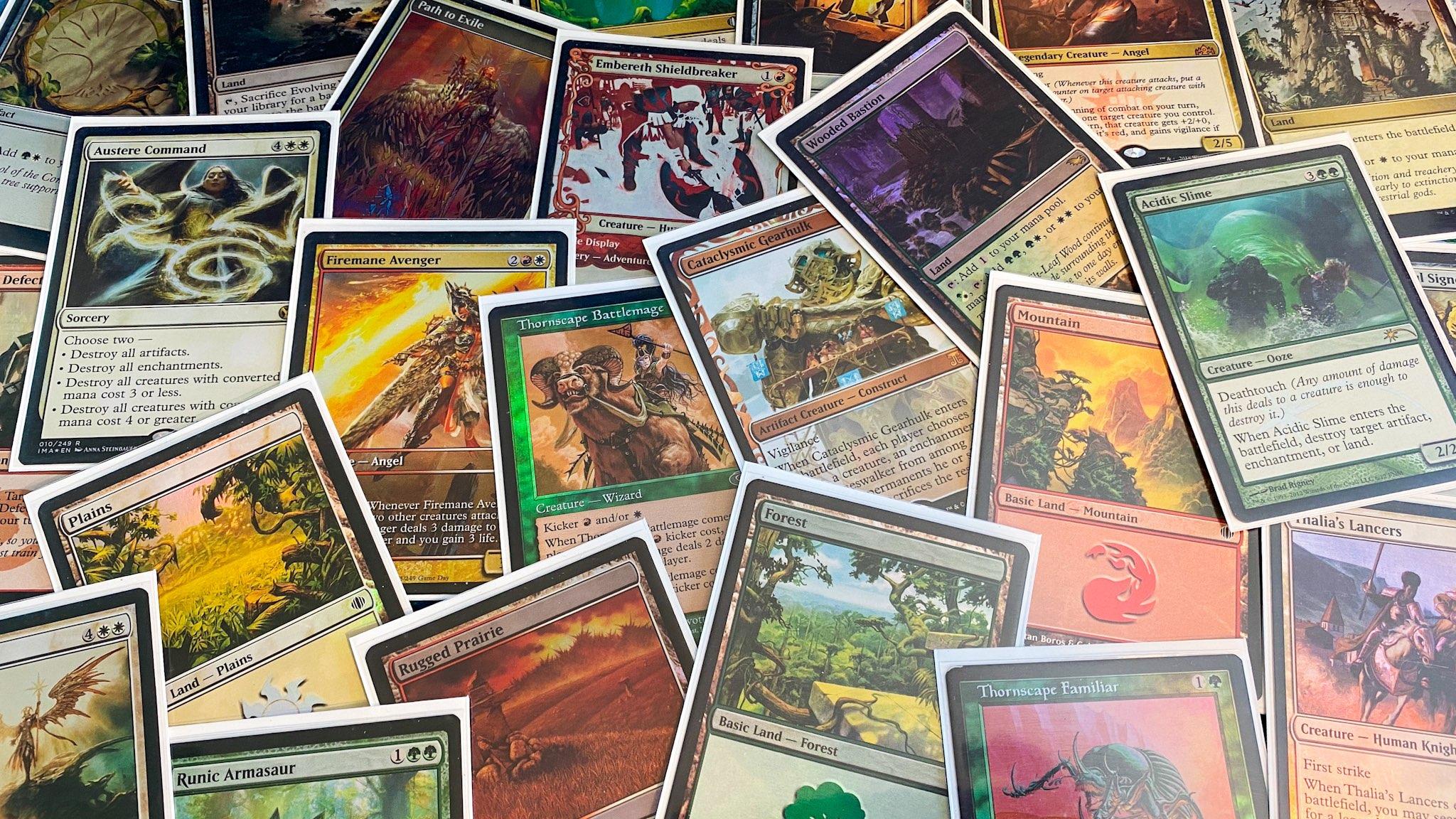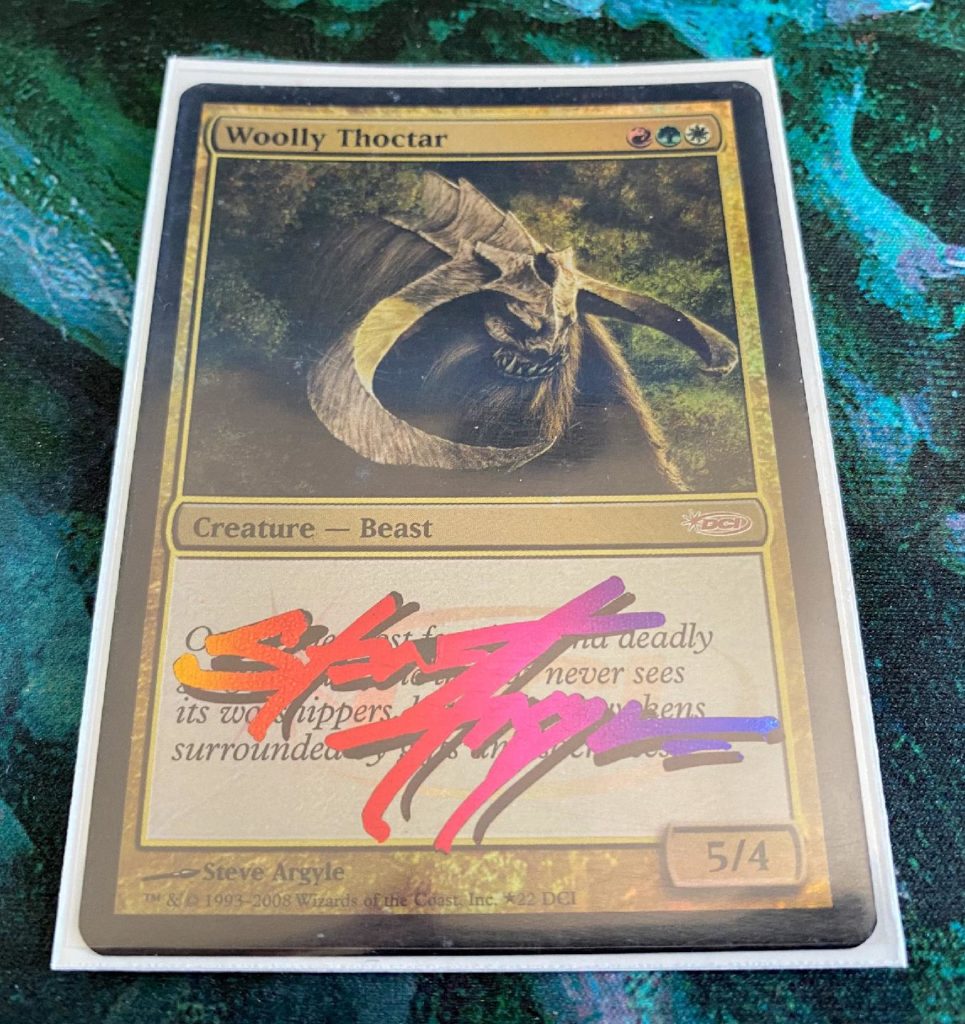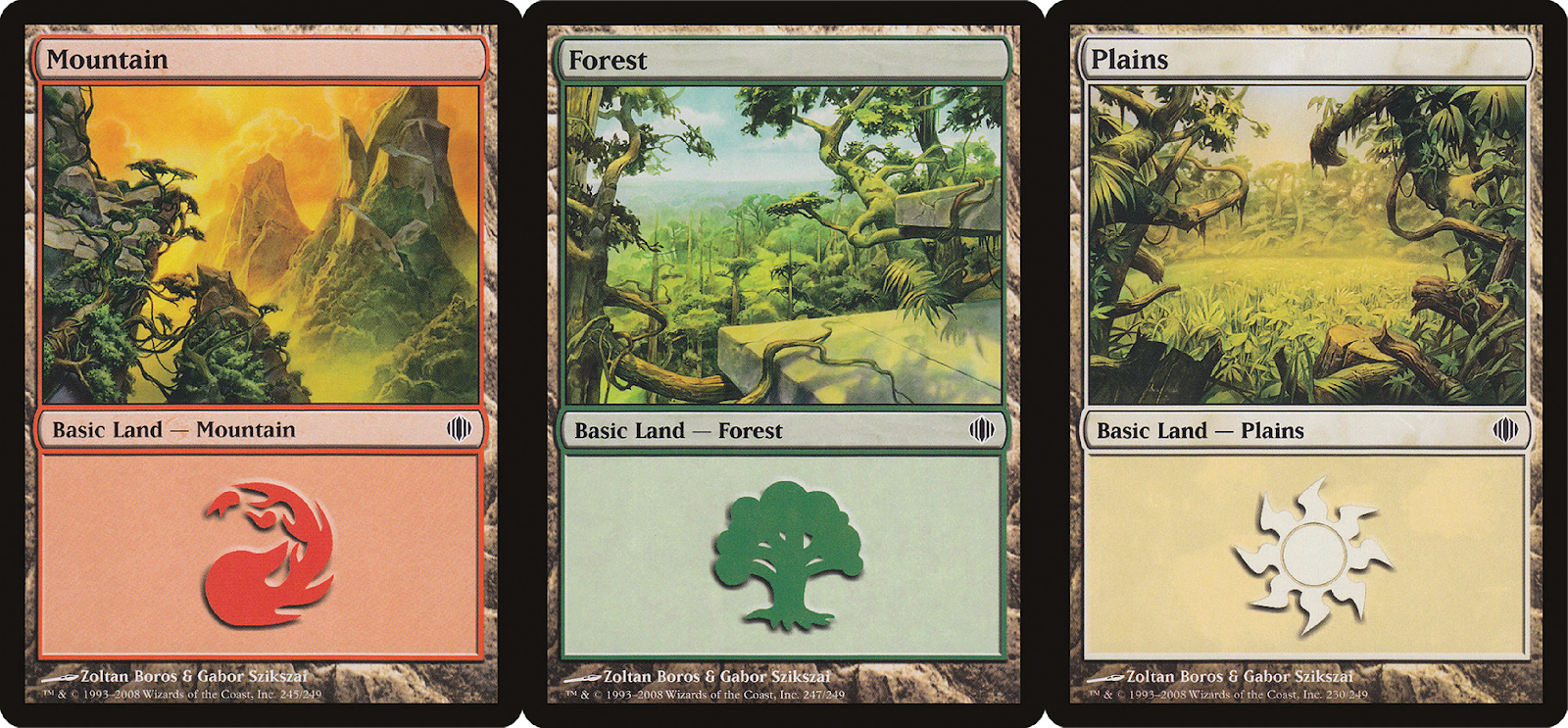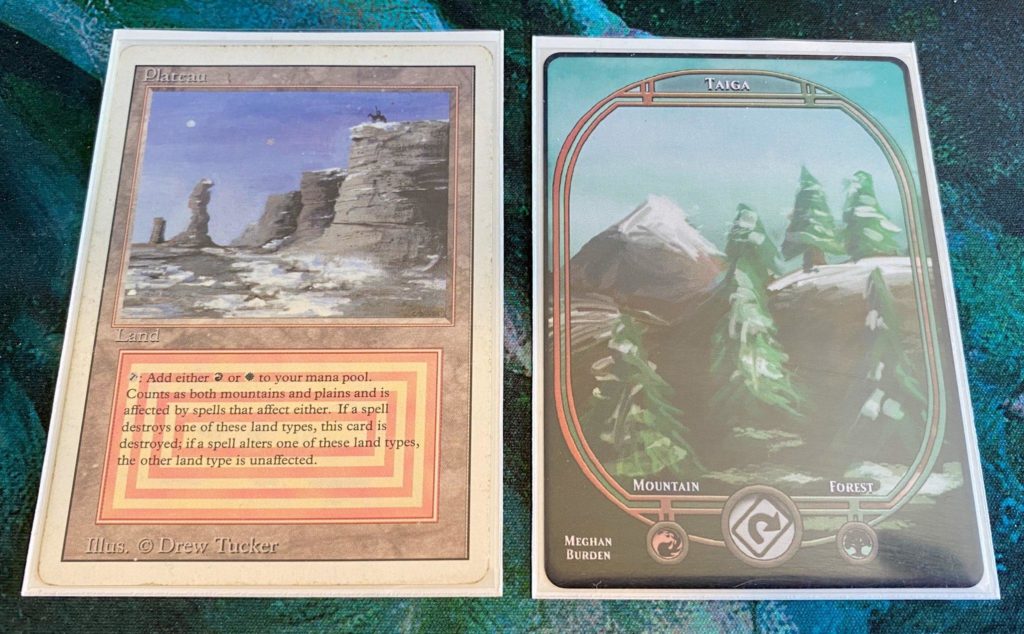A year ago, I wrote about the five kinds of decks you should eventually own. At the top of the list, there’s “The Daily Driver.” That’s the deck you pull out first for game night, and the one your playgroup knows you best for. In my case, it’s Gahiji, Honored One.
Today, we’ll be going through my signature deck— an embodiment of everything I love about Magic.
Beginnings
In 2013, Gahiji, Honored One arrived as a backup commander for “Nature of the Beast,” which was led by Marath, Will of the Wild. It was a Beast tribal deck that had things like Fireball and Archangel, as well as 42 lands. Preconstructed deck design was quite different back then, to say the least.
At the time, I was a year into my return to Magic. I was playing Naya Humans in Innistrad-Return to Ravnica Standard, and had just built my first Commander deck. I had little idea of how to play the format at the time, piloting a Captain Sisay deck with about six legends in it. It wasn’t until 2015 that I felt the urge to build around my favorite shard: Naya. It’s the place for big creatures, splashy spells, and playing like you’re watching the Starter 1999 intro video. That’s where Gahiji comes in.
Look at EDHrec, and you’ll see that Gahiji has a few common themes. Most players build the deck to be a go-wide token strategy, to maximize the anthem effect that Gahiji gives. Others might build it as a pillowfort deck, encouraging their opponents to ignore them. While that’s all well and good, I chose to go in a different direction. I’ve designed my list to animate a game of Commander, and encourage interaction between players. All the while, it’s a home for some of my all-time favorite cards in Magic. It’s varied and imperfect, but I love every bit of it.

I can’t afford to foil this deck out completely, but here are some shiny things I’ve collected over the years.
Creature-based Effects
At its core, this is an aggro-group hug deck meant to power up creatures on the battlefield. The goal is to encourage players to attack each other, and eventually overwhelm the opposition with pure muscle.
Commander games can vary wildly when it comes to the patterns of play. Because of that, I can’t afford to run cards that only make tokens. Sylvan Offering makes a ton of soon-to-be 3/1 attackers, but at their best, attacking is all they’ll do. I have to be able to make each spell count, and have a diverse offering that can respond to what my opponents are up to. I need more out of my creatures than what tokens can offer. Every single creature, save one exception, fulfills a role on the roster.
For removal, we’re looking at format favorites like Reclamation Sage and Acidic Slime. However, there’s also some spice here. With the combat-nature of this deck, it makes sense to run Firemane Avenger as a repeatable Lightning Helix. For flexibility, I’ve included Thornscape Battlemage, which can deal with both creatures and artifacts. It’s also a card from my youth, so there’s a little nostalgia there, but it still holds weight as a two-for-one threat. Speaking of artifact removal, I think Embereth Shieldbreaker is vastly underplayed in the format, since it can take out Sol Ring on Turn 1, or get rid of The Great Henge on a later turn for a single red mana.
The pattern of creature-based effects continues into the board wipes and card draw. Bane of Progress, Sunblast Angel, and Cataclysmic Gearhulk all offer ways to level the playing field. To draw cards, I look to Tireless Tracker, Ox of Agonas, and Runic Armasaur, to name a few. By centralizing a lot of these effects on creatures, Eladamri’s Call becomes even more potent. Also, each one of these tools can then turn around and attack with +2/+0.
As for that one exception I mentioned? Woolly Thoctar. Yes, you read that correctly. It’s a three-mana 7/4 when attacking with Gahiji, and besides, I have an amazing Steve Argyle signature on it. Simply put, Woolly Thoctar will never be cut from this deck. It serves as a reminder to enjoy playing big, dumb creatures—the kind I loved when I was a kid. Since the foil is so unfortunately warped, I have a house rule for myself: whenever I see it on the top of my deck, I announce it to the rest of the players. And no one is ever worried about me knowing this, because after all, it’s a three-mana 5/4 that can’t trample over a squirrel token. Sometimes, you just have to depart from building the “best” version of your deck, and Woolly Thoctar is a daily reminder of that.

Encouraging Interaction
Gahiji gets people moving, and that’s one of the best aspects of the deck. Because of this, I’ve included elements to encourage it. I’m a big fan of the monarchy mechanic, so we have Palace Jailer and Regal Behemoth to put the crown in play. With every attack to take the crown, it’s another boost that Gahiji gives out. I’ve found that this can really help with getting life totals down, to speed up the game. Two other cards that accelerate the game are Heartwood Storyteller and Selvala, Explorer Returned.
Humble Defector has plenty of criticism for being unpredictable, however, I beg to differ. If you’re not ahead at the time, it’s an easy way to make friends at the table. You can make a player promise to send it back to you, or you can pass it around to the players in 2nd-4th place. If played appropriately, it can be more than just a two-mana Divination.
As you’ll notice, all of these things work wonderfully with Smothering Tithe, which can absolutely run away with games. With more cards being drawn by everyone, there are more threats and haymakers that can be played.

We don’t know much about Gahiji’s lore, but it’s fitting to use bonafide Naya basics. These lands represented wild, untamed life, and it’s fitting for the nature of the deck.
Packages
There are two distinct packages in this deck that have fluctuated over the years: Legends and Sunforger. Curating these packages has been one of the most fun dimensions of growing with this deck. I’m constantly re-evaluating which ones make the cut, but over the past year, it hasn’t changed much. Below are the current rosters, and their respective roles.
The legends package can be tutored out by Captain Sisay or Thalia’s Lancers: Mirri, Weatherlight Duelist, Iroas, God of Victory, Aurelia, Exemplar of Justice, Marisi, Breaker of the Coil, Trostani Discordant, Aurelia, the Warleader, Selvala, Explorer Returned,and Shinka, the Bloodsoaked Keep.
The Sunforger list is a bit more straightforward. While this card is costly to get on line, it pays off in dividends over many turns: Path to Exile, Swords to Plowshares, Chaos Warp, Boros Charm, Teferi’s Protection, Eladamri’s Call, and Naya Charm.
Before we move on, let’s get one thing out in the open: Naya Charm is Naya Cryptic Command. You don’t even have to squint too hard to see the similarities. I’ve used all three modes of this card, and never once have I been disappointed to have it in hand. It can clear a path through your opponent’s blockers, stop Craterhoof Behemoth before it attacks, get back a countered spell, and more. Few other Naya cards offer this much flexibility, which is why it has a permanent spot in the deck.
Graveyard Hate
Personally, I believe that players don’t play enough graveyard hate in their decks. In a world of Muldrothas, Merens, and the like, interacting with the graveyard is necessary. With this in mind, there are multiple effects in my deck: Angel of Finality for targeted removal; Ground Seal to shut off cards like Sevinne’s Reclamation; Dryad Militant as cheap disruption for spell-heavy decks, like Kess, Dissident Mage; and finally Jötun Grunt is a spicy new addition here—let’s see if it can earn its slot.

The Plateau is the first thing I ever won at a GP. Recently, digital artist Meghan Burden (@sheepycutie on Twitter) gifted me with this beautiful Taiga. We’re now only a Savannah away from completing the set!
Winning
Winning is straightforward, but getting there is a challenge. The two main “I win” cards are Insurrection and Aurelia, the Warleader. The eight-mana sorcery is easy enough to figure out; cast it when there are tons of creatures on board. However, Aurelia has plenty of nuance. In the best case, we have at least Gahij, Iroas, and Aurelia out. When just the three of them attack, they attack twice, with the buff stacking twice. All the while, they attack with menace, and creatures can’t deal combat damage back to them. These three cards attack for a combined total of 46. This can take one player out as early as T4, but is more likely used to take two players out in the late-game. This is because I can choose to attack a different player for the second combat. Depending on how competitive the pod is, I’ll either race to get these pieces, or take it easy and play a more passive route.
Admittedly, the deck needs more ways to win. I used to play Thunderfoot Baloth, but rarely found it and Gahiji out at the same time. So, I changed it to Angelic Skirmisher as a six-drop creature to play after Gahiji. However, results have been mixed at best, so we’ll have to revisit the “post-Gahiji” creature slots. Like in Kristen’s most recent article, I’ve found that some of these pieces just don’t cut it anymore, so I have to explore new ways to victory. The deck used to run Titanic Ultimatum and Overwhelming Stampede, but those cards just don’t move the needle like they used to. These days, if an Overrun isn’t coming from Craterhoof Behemoth, you need to reevaluate why you’re playing it.
Gahiji’s Place
To be honest, I worry about this deck. The format is becoming a landscape of value engine decks, where the commander offers a do-it-all approach to deck design. Kinnan, Bonder Prodigy, Chulane, Teller of Tales, and Muldrotha, the Gravetide are three such examples of this. These kinds of strategies outvalue their opponents, and see tons of cards throughout the game. Just giving +2/+0 to attacking creatures simply doesn’t cut it anymore. Wizards of the Coast has really taken the microscope to the Commander format, and it’s increasing the amount of pushed legends we see in the command zone.
However, I’ll keep playing Gahiji without remorse. You could say it’s nostalgia, force of habit, or just a general emotional attachment. While I think it’s a bit of all three, I also think this deck serves an important purpose in the ecosystem. When players aren’t interacting, or focusing too much on building their value engine, Gahiji encourages them to mix it up. You can attack with Birds of Paradise, an Eldrazi Scion, or Ornithopter. This deck serves as a rallying cry to turn things sideways, and make fireworks happen. Even if I’m not the one winning, that’s worth it alone. I’ll take my 25% win rate, if it means that my opponents are going to have the kind of game they dream of. After all, there’s more to Commander than winning. There’s always going to be a place for this large, tusked jungle beast, as long as I have something to say about it.
If you’d like to check out my full Gahiji decklist, check it out over on archidekt.
Travis is a Virginia-based player and writer, who has been turning things sideways since Starter 1999. He primarily plays Commander, Pauper, and Legacy, and has a passion for introducing new players to the game. When he isn’t making people pay the Thalia tax, he can be found mountain biking or playing the guitar. You can follow his exploits here on Twitter and Instagram.

